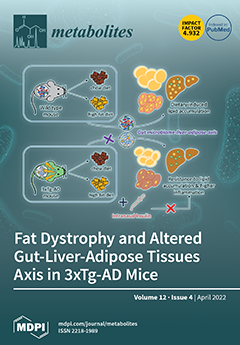Among the phospholipase A
2 (PLA
2) superfamily, the secreted PLA
2 (sPLA
2) family contains 11 mammalian isoforms that exhibit unique tissue or cellular distributions and enzymatic properties. Current studies using sPLA
2-deficient or -overexpressed mouse strains, along with
[...] Read more.
Among the phospholipase A
2 (PLA
2) superfamily, the secreted PLA
2 (sPLA
2) family contains 11 mammalian isoforms that exhibit unique tissue or cellular distributions and enzymatic properties. Current studies using sPLA
2-deficient or -overexpressed mouse strains, along with mass spectrometric lipidomics to determine sPLA
2-driven lipid pathways, have revealed the diverse pathophysiological roles of sPLA
2s in various biological events. In general, individual sPLA
2s exert their specific functions within tissue microenvironments, where they are intrinsically expressed through hydrolysis of extracellular phospholipids. Recent studies have uncovered a new aspect of group IIA sPLA
2 (sPLA
2-IIA), a prototypic sPLA
2 with the oldest research history among the mammalian PLA
2s, as a modulator of the gut microbiota. In the intestine, Paneth cell-derived sPLA
2-IIA acts as an antimicrobial protein to shape the gut microbiota, thereby secondarily affecting inflammation, allergy, and cancer in proximal and distal tissues. Knockout of intestinal sPLA
2-IIA in BALB/c mice leads to alterations in skin cancer, psoriasis, and anaphylaxis, while overexpression of sPLA
2-IIA in
Pla2g2a-null C57BL/6 mice induces systemic inflammation and exacerbates arthritis. These phenotypes are associated with notable changes in gut microbiota and fecal metabolites, are variable in different animal facilities, and are abrogated after antibiotic treatment, co-housing, or fecal transfer. These studies open a
new mechanistic action of this
old sPLA
2 and add the sPLA
2 family to the growing list of endogenous factors capable of affecting the microbe–host interaction and thereby systemic homeostasis and diseases.
Full article






